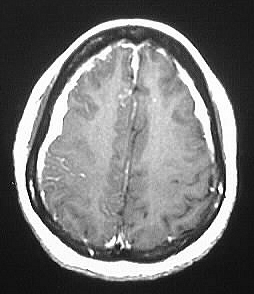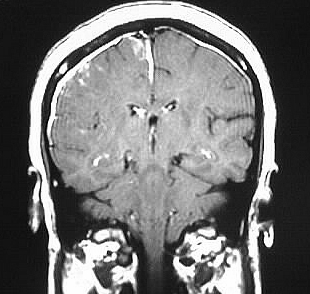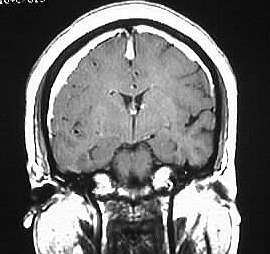


Sarcoidosis
Findings:
Coronal and axial postcontrast T1WI show thickened irregular
enhancing meninges over the cerebral convexities with some extent into
the interhemispheric region.
Differential Diagnosis:
This pattern has a wide differential diagnosis, including
infection, mets/carcinomatosis, intracranial hypotension, idiopathic, and
sarcoidosis among others. TB would be unlikely since the basilar meninges
are spared.
Discussion:
The CNS is affected in a minority of sarcoidosis, with
up to 15% noted at autopsy. Less than 3% of neurosarcoidosis occurs without
systemic manifestations, and up to 50% may be subclinical. Symptoms depend
on location of involvement, but seizures are rare and should suggest an
alternate diagnosis. Sarcoidosis has numerous CNS manifestations, including
leptomeningeal disease, WM disease that simulates MS, hypophysitis, hydrocephalus,
cranial nerve enhancement, vasculitis, and even enhancing parenchymal masses.
The most common manifestation is hydrocephalus due to arachnoiditis. Leptomeninges
are commonly involved, with dura involved less frequently.
reference: Osborn, A; Tong, K. Handbook of Neuroradiology: Brain and Skull 2nd edition.1996: Mosby-Year Book Inc. pp.476-477, 590.